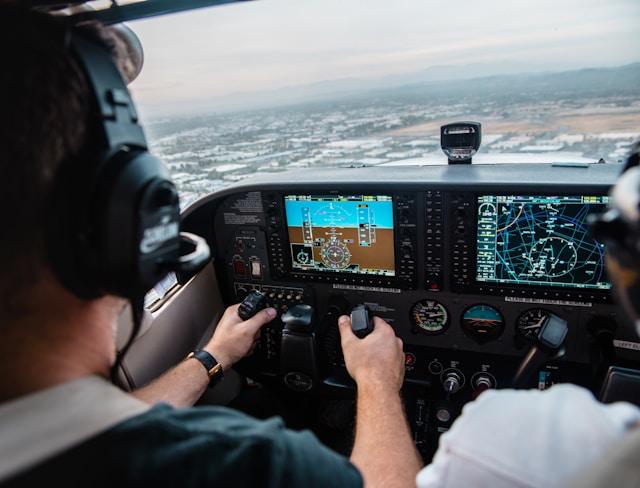Before embarking on a flight with your own private aircraft, careful preparation and adherence to a detailed checklist are essential to ensure safety, compliance, and efficiency. Pilots must meticulously review and execute a series of critical tasks to guarantee the aircraft’s airworthiness, plan the flight route, manage fuel reserves, and brief passengers on safety protocols. This article provides a comprehensive checklist outlining essential steps that pilots should follow before flying their private aircraft, emphasizing the importance of thorough preparation and adherence to regulatory standards.
1. Weather Assessment and Flight Planning With the Help of Professional Aviation
Weather assessment and flight planning are paramount when preparing to fly your own private aircraft. With the expertise of Pilot John International, pilots can rely on professional guidance to assess current weather conditions and plan routes accordingly. This ensures optimal safety and efficiency during flights, minimizing potential risks associated with adverse weather patterns. This aviation offers comprehensive support in analyzing weather forecasts, determining suitable departure times, and identifying alternate routes if needed. By integrating their services into pre-flight checklists, pilots can confidently navigate various weather scenarios, enhancing overall flight preparedness and ensuring a smooth and secure aviation experience.
2. Aircraft Inspection and Maintenance Checks
Conducting comprehensive aircraft inspection and maintenance checks is vital to verify the aircraft’s airworthiness and operational readiness. Pilots follow a detailed checklist provided by the aircraft manufacturer or regulatory authority, covering exterior and interior inspections, engine checks, control surfaces, and avionics systems. Inspections include verifying fuel quantity, checking tire condition and pressure, testing lights, and ensuring emergency equipment is functional. Pilots must address any discrepancies or maintenance issues identified during the inspection to ensure the aircraft is in optimal condition for flight. Regular maintenance and thorough inspections contribute to safe operations and minimize the risk of mechanical failures during flight.
3. Weight and Balance Calculation
Calculating weight and balance is critical to ensure the aircraft’s stability and performance characteristics meet safety standards. Pilots calculate the total weight of passengers, cargo, fuel, and other items on board using accurate measurements and load distribution data. This calculation helps determine the aircraft’s center of gravity and ensures it falls within acceptable limits. Pilots must comply with aircraft limitations and regulatory requirements when performing weight and balance calculations. Adjustments can be necessary to redistribute weight or reduce payload to maintain proper balance. Proper weight and balance management enhances flight safety, optimizes aircraft performance, and ensures compliance with operational guidelines.
4. Fuel Management and Planning
Effective fuel management involves calculating the required fuel quantity based on factors such as flight distance, planned route, weather conditions, and alternate airport requirements. Pilots consider fuel reserves for unforeseen delays or diversions to ensure an adequate supply throughout the flight. Calculations account for fuel consumption rates, taxiing, and engine performance at different altitudes. Pilots choose the most efficient fueling strategy based on available options at departure and destination airports. Monitoring fuel levels and consumption during flight enables pilots to make informed decisions and adjust plans to maintain sufficient reserves. Proper fuel planning supports safe flight operations, extends operational range, and facilitates compliance with regulatory requirements.
5. Passenger Briefing and Safety Procedures
Before boarding passengers, pilots conduct a comprehensive briefing to review safety procedures and emergency protocols. Passengers are informed about seatbelt usage, emergency exits, and the location of emergency equipment such as life vests and oxygen masks. Pilots demonstrate cabin safety features and explain emergency procedures such as brace positions and evacuation protocols. Clear communication ensures that passengers understand their roles and responsibilities during the flight. Pilots emphasize the importance of following instructions and remaining calm in the event of an emergency. Conducting a thorough passenger briefing promotes a safe and organized cabin environment and enhances overall flight safety.
Conclusion
In conclusion, adhering to a meticulous pre-flight checklist is essential for pilots preparing to fly their private aircraft. By prioritizing weather assessment and flight planning, conducting thorough aircraft inspections and maintenance checks, calculating weight and balance, managing fuel effectively, and conducting comprehensive passenger briefings, pilots can ensure a safe, efficient, and enjoyable flight experience. Each step in the checklist contributes to mitigating risks, optimizing operational readiness, and complying with regulatory standards. By following these guidelines, pilots can confidently navigate the skies and uphold the highest standards of safety and professionalism in private aircraft operations.
